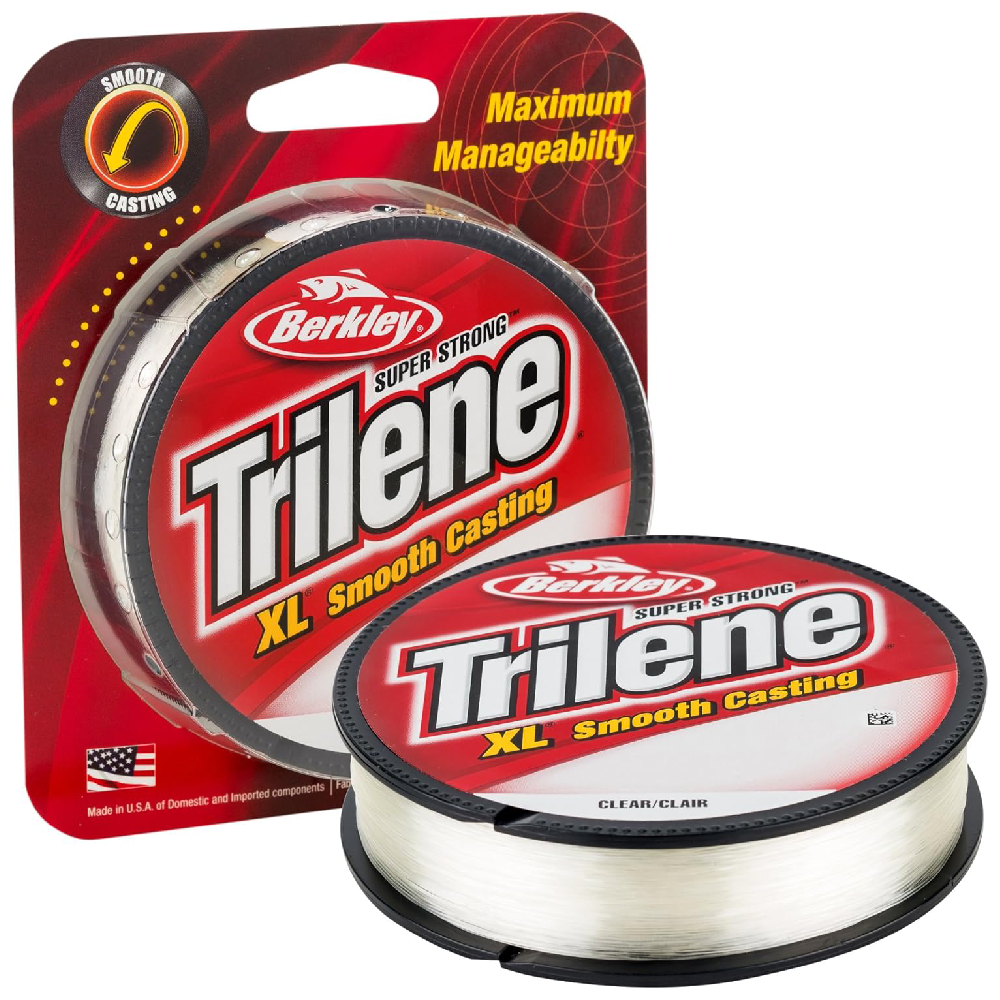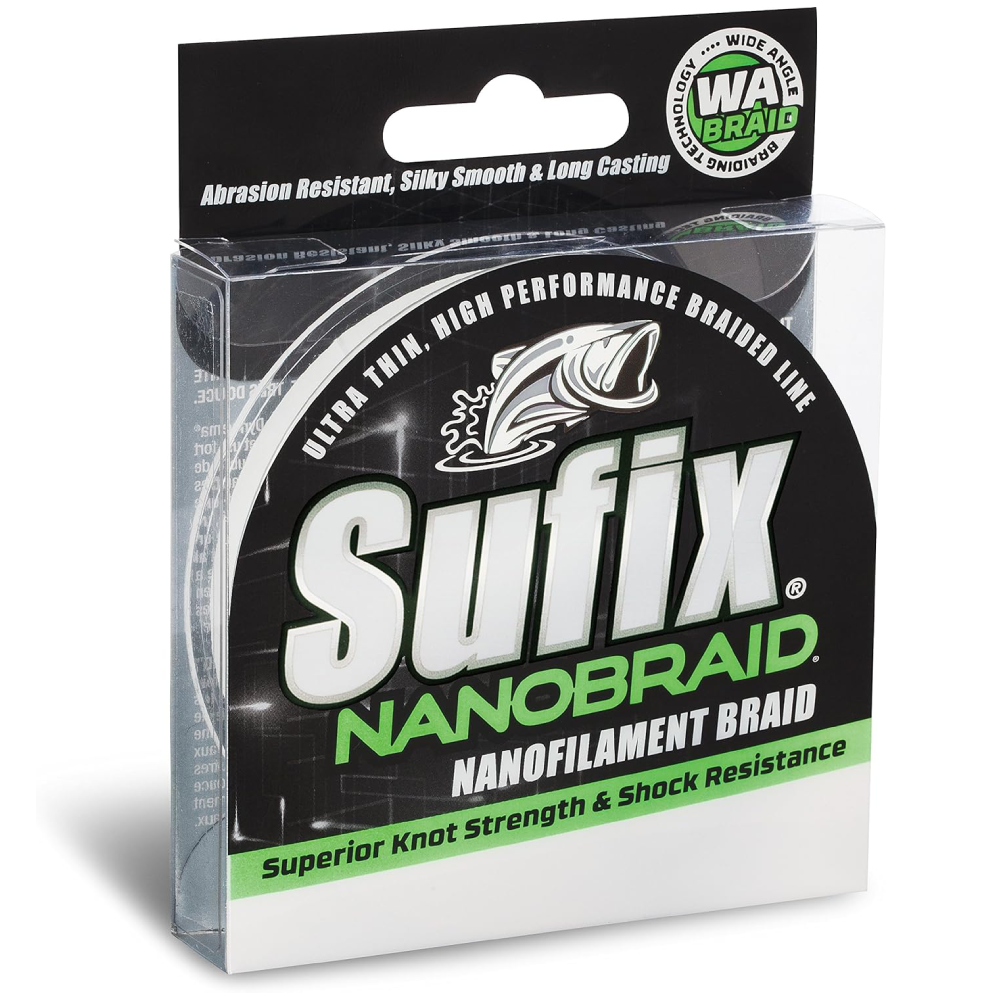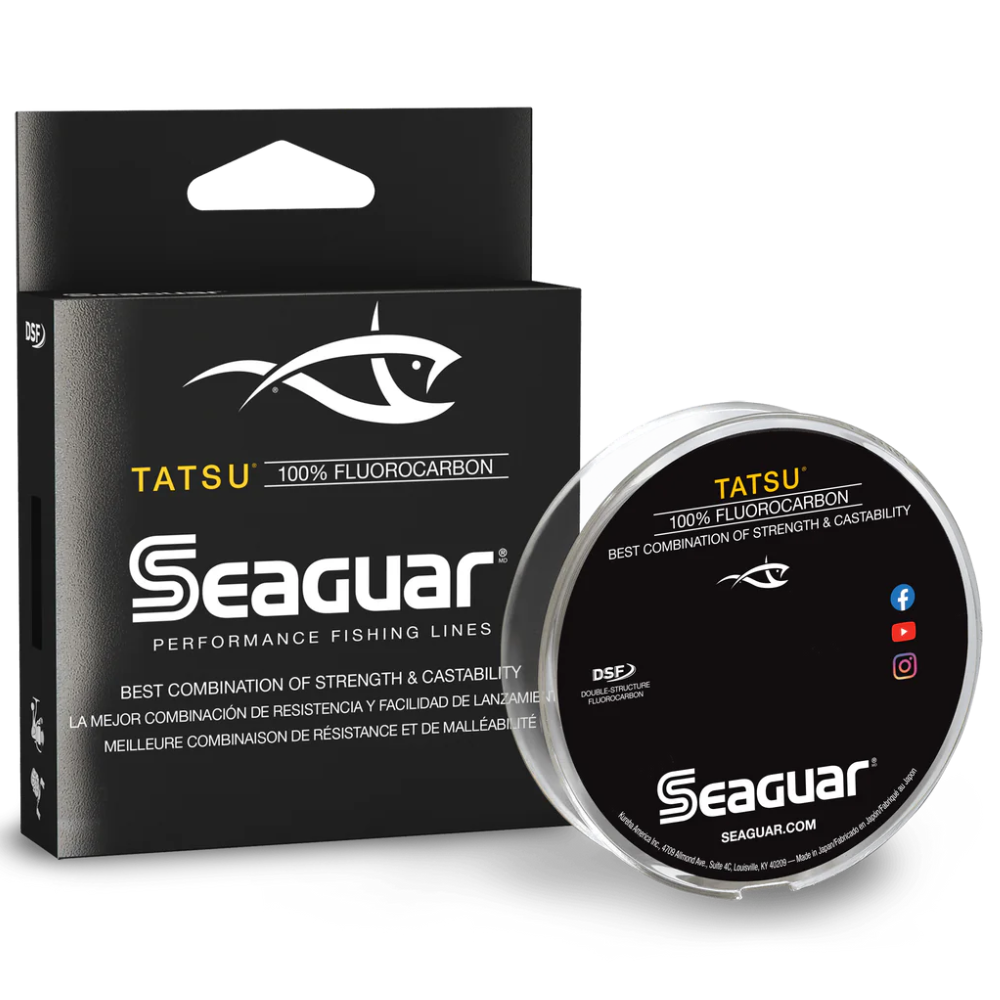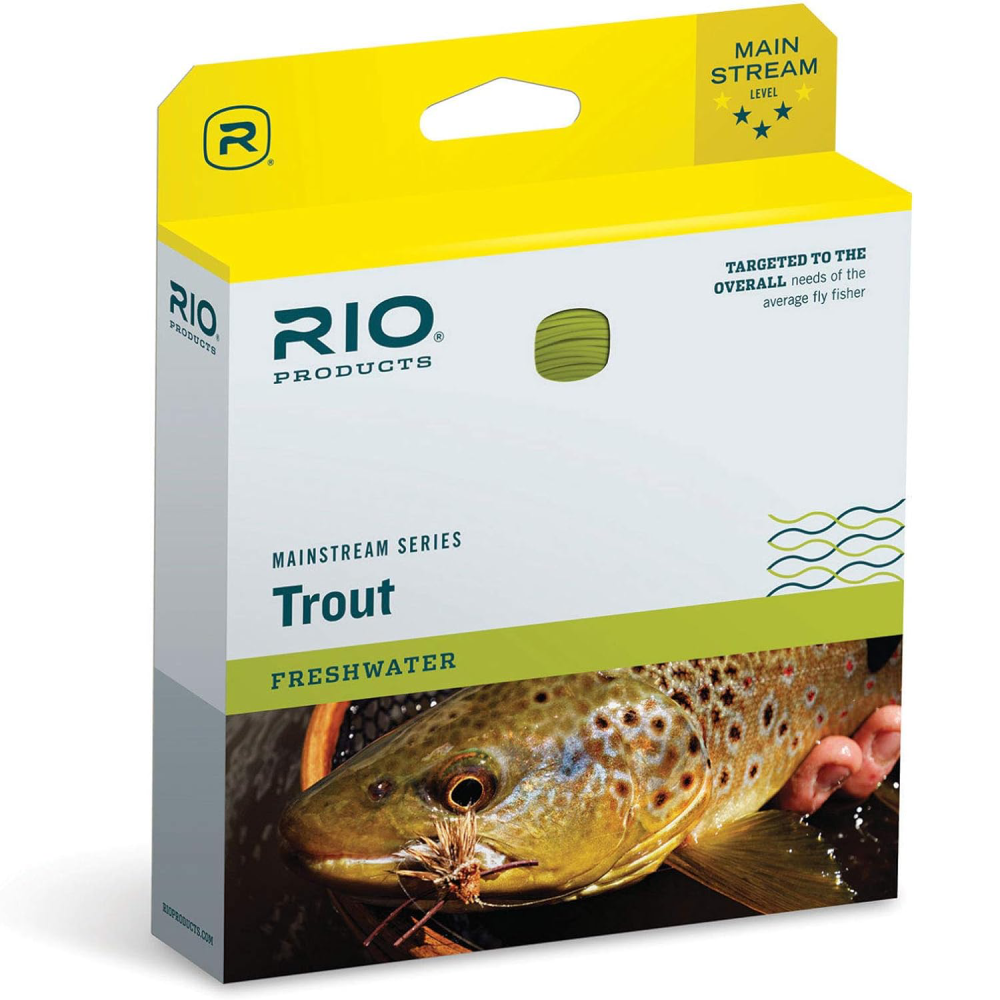We may earn revenue from the products available on this page and participate in affiliate programs. Learn more ›
Using the right fishing line for trout can increase your success. Trout are fun to catch, but they’re challenging, too. They have great eyesight with soft and small mouths, eat relatively small things, and live in a wide variety of habitats. To have the best bet at catching them, I strongly recommend a dedicated trout set-up—a rod and reel, lures, and terminal tackle all specifically designed to catch trout.
One of the most critical components of your trout setup is the fishing line. I would argue it’s more important than your rod and reel. Choosing the right line can be one of the most critical components in catching more and bigger trout, more easily and consistently. Here's why I think that's true, and my top picks for the best fishing line for trout.
Best Monofilament: Berkley Trilene XL
Best Braid: Sufix NanoBraid
Best Fluorocarbon: Seaguar Tatsu
Best Fly Line: Rio Mainstream Trout Fly Line
Best Monofilament: Berkley Trilene XL
Specs
Materials and Construction: Nylon
Four Pound Test Diameter: 0.20mm
Colors Available: Clear
Pros
One of the best performing budget-friendly lines of all time
XL is relatively stretchy, good when trying to decrease pulled hooks
Low spool memory
Available in 2-pound test
Cons
Not the thinnest, farthest casting, or most abrasion-resistant monofilament available
Berkley Trilene XL is a legendary name in the fishing world. It is a line that has been around for decades, and still performs well for a variety of angling techniques and species. For trout, it has a couple of important characteristics. First, it is stretchy, which can prevent hooks being pulled from the soft mouths of trout. This stretch also pairs well with lightweight, and slower-action rods. Trilene Xl is also available in 2-pound test, which some other models of monofilament and fluorocarbon is not. While it may not be the best line in any particular category, if you’re looking for a budget line that will be well suited for catching trout, Trilene XL is a great choice.
If you’re looking for a tougher monofilament, that is also still relatively limp and excellent casting, I strongly suggest checking out Sufix Elite. It is a phenomenal line with a bit better handling, less stretch, and more abrasion resistance. However, it’s more expensive, and for many trout anglers looking for a low-cost line option they can buy just about anywhere, Trilene XL remains a great choice.
Best Braid: Sufix NanoBraid
Specs
Materials and Construction: 8-strand Dyneema
Four Pound Test Diameter: 0.08mm
Colors Available: Low-vis green, aqua camo
Pros
Very small diameter available: 2-, 3- and 4-pound test (and up to 14)
Casts well with relatively low tangling risk
Tight weave retains shape and strength over time
Surprisingly tough, even at the lowest breaking strains
Cons
Extremely thin diameter braid tangles easily
Very low abrasion resistance
If you’re a trout fisherman, or use any kind of ultra-light tackle, Sufix Nanobraid is the best braided fishing line for your applications. Like other Sufix lines, it is smooth, casts outstanding, is very sensitive, and holds its structure and shape very well over time. However, it’s not really that much different than Sufix 832 in how it fishes once you get up into the 8- to 14-pound range. While it seems to be a bit thinner—and is advertised as such—I didn’t notice that much difference in fishability.
However, there is simply nothing else that compares to it in the 2- to 8-pound class. The line is insanely thin! I found it surprisingly tough as long as you don't snag it on something. It’s perfect for casting really small jigs, spinners, or crank baits. They fly through the air so much easier with this very thin braid than with monofilament. And zero stretch makes feeling hits from small fussy fish much easier.
Of course, with such a thin and low-strength braid, you’re not getting much abrasion resistance. I would keep this away from any kind of hard structure—even rubbing it against a bush or boat carpeting can damage it.
Best Fluorocarbon: Seaguar Tatsu
Specs
Materials and Construction: Single strand, thermally fused polyethylene
Four Pound Test Diameter: 0.165mm
Colors Available: Clear
Pros
The only double-structure main-line fluorocarbon available
Casts and handles as well, or better, than the very best monofilaments
Low stretch, nearly invisible, and long lasting
Fluorocarbon sinks, unlike monofilament or braid
Cons
Expensive
If fishing for trout is your passion, and you want the very best fluorocarbon possible, few compare to Seaguar Tatsu. Seaguar is on the cutting edge of fluorocarbon lines, and they do not disappoint with this incredible line. Most anglers who are used to the easy casting and limp nature of monofilament dislike fluorocarbon because it can be hard, stiff, and difficult to tie knots with. Tatsu addresses these weaknesses and provides a product unlike any other. It’s a bit overkill for some other types of fishing. But you’re using extremely thin lines for extremely fussy fish, this is absolutely worth the cost (around $30 for 200 yards). If you want the ultimate trout line, Tatsu is going to be nearly impossible to beat.
That said, there are much less expensive fluorocarbon options. I personally think Trilene Fluorocarbon Professional Grade is a low cost 100% fluoro line that performs well. It's only $11.99 for 110 yards. And if you’re just looking for fluorocarbon leader material, Seaguar Gold is great. It is a high quality, limber leader material available starting at 2-pound test—perfect for the trout fisherman.
Best Fly Line: Rio Mainstream Trout Fly Line
Specs
Materials and Construction: Weight forward, floating
Weights Available: 3 to 8
Colors Available: Lemon green
Pros
Covers most fly techniques for beginner or intermediate anglers
Finish holds up well, is very buoyant, and is easy to take care of
The taper helps with casting, while still able to cast small, delicate flies
Color is bright enough to see, without spooking fish
Cons
Not the most durable fly line on the market
Master of none, not the best for any one technique
If you’re looking to try fly fishing for trout for the first time, it can be overwhelming to try and pick out a line. Even within just one brand, you might have several dozen choices. I am a big fan of Rio products in general, and the Mainstream lines are some of the best value fly lines available today. They are not specialists; there are lines that are better with streamers, nymphs, dries, and just about everything else. However, the Mainstream Trout WF will cover the general needs of the more novice fly fisherman at a very affordable price.
While I have lines costing more than twice as much, I think the Mainstream lines cast excellent. The few I’ve owned have held up well to years of moderate use (both freshwater and saltwater Mainstream lines). At around $40, you cannot do any better. If you’re looking for a line to take your fly fishing to the next level, I absolutely love the Scientific Anglers Amplitude series, and the Cortland Trout series are also excellent. They both offer a line for every type of fly fishing, and they are fantastic casting, extremely rugged lines. If you’re looking to step-up from a budget line, but don’t want to jump all the way up to the $100+ price-point, the Orvis Hydros is a fantastic line that has been a real winner for me in the past.
How We Tested Fishing Line for Trout
My choice in trout fishing lines is based on nearly 30 years of angling experience. My passion for fishing began when I started fishing for trout at the age of six with my grandfather. These days I spend all my time fishing for trout with a fly rod, but for years all I used was a spinning rod. Whether you use a fly rod or spinning rod, there’s no right or wrong way to fish for trout. However, no matter what kind of gear you’re using, fishing line is the single most important piece of your fishing tackle. This goes for every species, not just trout. So for this article, I used my own experience with dozens of lines and tapped into my contacts: industry professionals, top-tier tackle suppliers and retailers, and some other trusted anglers. Here are some of the factors I considered:
Casting distance: How well does the line cast with very small lures and bait?
Stretch and sensitivity: How much stretch does the line have, and is this a positive or a negative for this kind of line?
Abrasion resistance and durability: How does the line hold up to being rubbed against rocks and woody structure, or how will it handle highly vegetated areas? How long does it last after being subjected to water, sand and dirt, UV rays, and lots of hours being casted?
Handling and memory: Often overlooked, how limp and soft a line is has a dramatic impact on casting distance and lure action. The harder and stiffer a line is, the worse it will perform generally. However, thicker lines tend to also be more abrasion resistant, so it’s all about trade-offs.
Quality and craftsmanship: Is the line consistent and reliable from spool to spool?
Price: Does the line offer good value for its stated purpose?
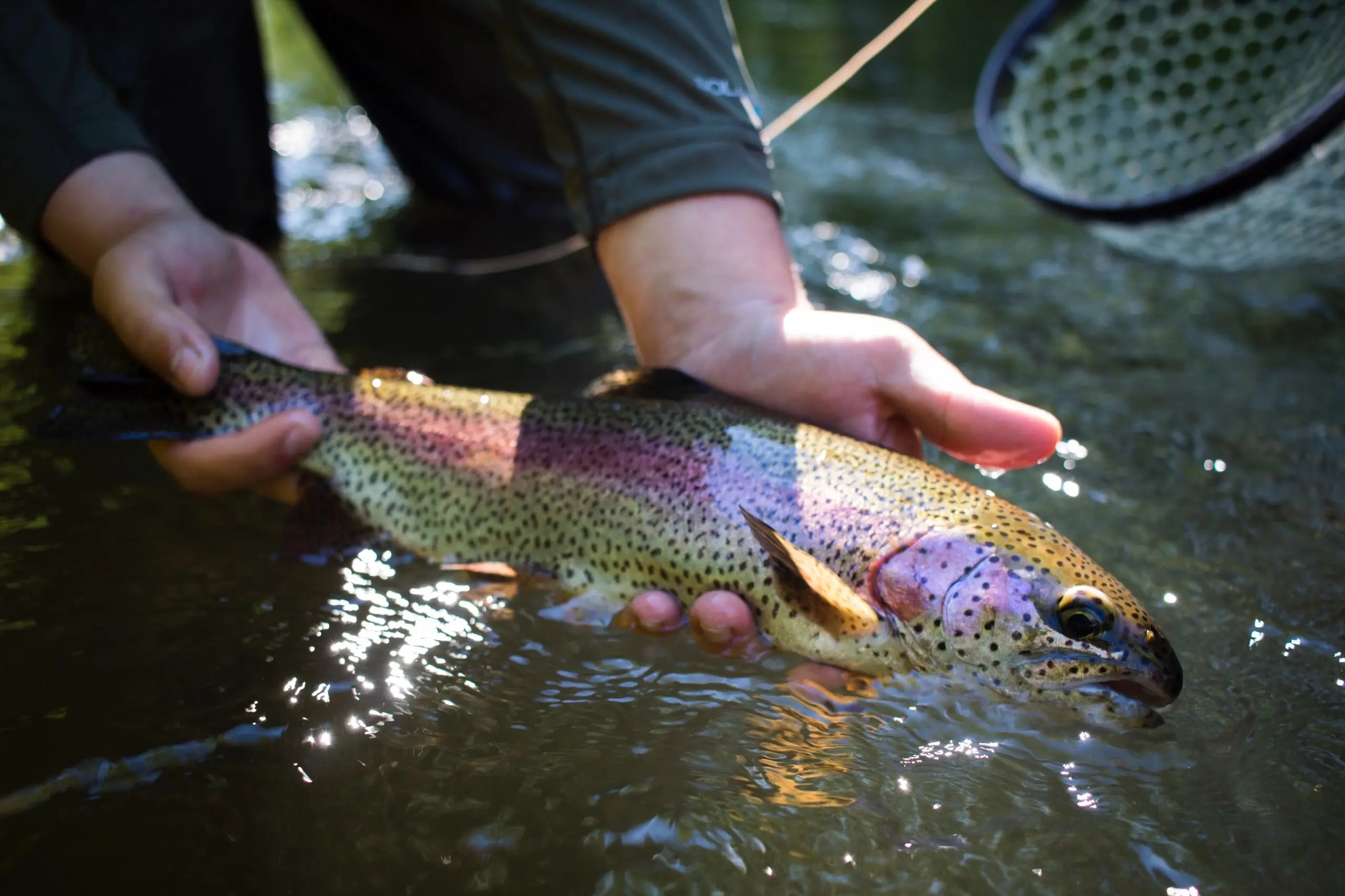
What To Look for in Fishing Line for Trout
Weight
Trout eat a lot of small prey, and this often requires casting lures or bait that are 1/4-ounce or less—often much less. One of the top mistakes new trout anglers make is getting line that is far too heavy. It makes casting a serious challenge, impacts swimming action on your baits, and is more visible to trout, which have excellent eyesight. Heavy line is also typically unnecessary when fighting most trout, unless you’re going after large steelhead, lakers, or other giant trout. Most you’ll encounter will be 15 inches or under, and that size can be easily handled on line between 4 and 8 pounds. Some anglers even prefer 2-pound.
Line Type
Braid
With the availability of very small diameter, high-strand lines braid has gained a following with trout fisherman in recent years. Lines like Sufix Nanobraid, J-Braid Grand, Berkley X9, and Spiderwire Ultracast are all available in six-pound test or less and all are the equivalent of one-pound monofilament or less. These ultra-thin braids cast incredible, even with the smallest spinners, jigs, or weightless bait (live or artificial). You can also check out our roundup of the best braided lines for even more info and options.
However, braid has no stretch, so you must be careful you don’t rip the hooks out of the soft mouths of trout. Using a light, moderate action rod will help with this. The bigger downside to using braid for trout is that it is highly visible underwater. Trout have great eyesight, and braided line can spook them. So, many anglers still prefer monofilament or fluorocarbon. Both are also much more abrasion resistant. Monofilament is the cheapest option by far, but fluorocarbon is the ultimate in invisibility.
Monofilament
Monofilament is still the most popular line, as it’s easy to use and cheap to buy. However, if you’re going to use monofilament, you must make sure to go very light on the pound-test. You must also buy a high-quality line that is soft, limber, and limp. Hard monofilament that has a lot of memory is horrible to use on ultra-light tackle, and can quickly ruin the fishing experience. Therefore, steer clear of cheap, bulk monofilament when fishing for trout.
Fluorocarbon
The best in invisibility, fluorocarbon is made with materials that bend light in a certain way making it very hard to see below the surface. Though fluoro used to be very expensive, it is now possible to spool up a small trout reel for less than $12, even with extremely high-quality line. This makes it very appealing to trout anglers who want less visibility and greater abrasion resistance, compared to both mono and braid.
You can also use a short piece of fluorocarbon leader with either monofilament or braided main line to help cut down on the visibility of your line. This requires an extra knot and a bit more complexity, which is the trade-off, but it also means putting fluoro where it matters most. Personally, I like using a very light braid (six-pound or less) and a light fluorocarbon leader. You get the benefits of both lines, making casting and presenting small lures easy and very enjoyable.
Tip: Make sure you use the right fishing line spooler to make sure you get it set up right.
Pound-Test
The pound-test (or breaking strain) of line that you use is influenced by how small the lures you need to cast, and how far you must throw them. Line diameter and pound-test go hand-in-hand: the stronger the line, the thicker it is. If you’re regularly casting very small lures or bait, you need to go very light. If you’re using monofilament or fluorocarbon as your main line, I would strongly suggest four-pound for most situations.
If you are considering braid, you can go much higher. I find 8-pound test easy to use with small lures, but 6-pound is even better (and my favorite). That being said, 4-pound Nanobraid is truly amazing, and just so darn easy to cast! Plus, these low-test braids are still more than strong enough to handle even larger trout in fast moving water. I have landed a 9-pound largemouth on 6-pound Sufix braid, and my wife landed a 36-inch pike!
Just be aware, the thinner the line you use, the more it will tangle. Braid is the worst in this regard. Pay extra attention to all steps of the cast and retrieve, especially if you just put the line on the reel.
Fly Fishing
Entire books have been written about fly fishing lines for trout, but here’s the basics. With fly fishing, you have three lines to think about. The fly line provides the weight needed to cast tiny flies, and is perhaps the most important. This is connected to a leader, which tapers down from thick to thin. Tippet, the last and shortest piece, attaches form the leader to the fly. This is generally the thinnest piece and is replaced throughout the day as you change flies and it gets shorter.
If you’re looking to try fly fishing for trout, I suggest keeping it simple. Try not to get overwhelmed by all the choices in main lines. The best overall line for fly fishing for trout is a floating, weight-forward (WF) line that matches the line rating of your fly rod. That one type of line will prepare you for nearly 90 percent of trout fly fishing situations across the country. Weight forward floating lines are not the perfect line for tiny dry flies, or swinging big streamers in deep water, but they will be effective in most places, with most flies, for most fish.
As far as leader and tippet, this often becomes even more complicated than the main line, so keep it simple to start. I would match the leader to the length of your rod if you’re a beginner. So if your rod is nine-feet, use a nine-foot leader. Typically, you’ll want to use a leader that is either equal or a step or two lower (thicker) than the tippet you will be using. If you plan on using 4x or 5x tippet, a 3x leader will be best. It’s tough to use very fine tippet with a thick leader—like a 2x leader with 6x tippet—so having a few options to swap out as you fish is smart. Tippet is the final piece of line you’ll need, and I suggest starting with 4x, 5x, and 6x. However, this is only a very rough guideline and I urge you to check in with your local shop, or ask some local fisherman what they are using on your local waters.
FAQs
Q: Is braided line good for trout?
I personally really like braid with ultra-light- and light-action rods and very small lures for trout and smallmouth bass. Braid allows you to cast so much farther with the tiniest of jigs and spinners, and you can even cast unweighted bait like worms, Powerbait, or small minnows. Braid is also so sensitive that even the softest nibbles from trout can be felt; the stretch of monofilament can make it hard to detect these subtle bites.However, you really must use some sort of less-visible leader with braid. This means buying another kind of line on top of your braided main line. I like fluorocarbon for my leader, but this ca be expensive. For many anglers, monofilament can be adequate to get out and have fun catching stocked trout in both rivers and ponds.
Q: How do you set up fishing line for trout?
There are two common options for trout anglers using a spinning rod (I won’t cover fly fishing here). First, you can just use a normal running line without a leader. If you’re going to do this, I would suggest using either monofilament or fluorocarbon. This is because braid is more visible under water, and without a leader, the fish might be able to spot your line.
The second option is to overcome that visibility of braided line–or thicker monofilament—by using a leader. Typically, this will be a short 6- to 12-inch piece of line between your main line and your lure. If you’re using the leader to decrease the visibility of your main line, you have a few options: use thinner leader than your main line, use the same diameter fluorocarbon, or both (a thinner fluorocarbon).
Q: What color fishing line for trout?
While I’m of the opinion that the color of your line doesn’t matter for most species, trout might be an exception. I think choosing a neutral, natural color is a good idea, and you should steer clear of neon colors. When in doubt, use clear.
Q: Can trout see fishing line?
Yes, trout can see your line. This might even prevent them from hitting your lure or bait. If you aren’t getting any hits, try sizing down the diameter of your line. This will often increase your chances of hooking finicky fish.
Q: What is the best time of the year to go trout fishing?
Trout fishing can be good year round, depending on where you live. April is often the trout opener in many Northeast states, and early summer can provide great fishing out west. Fall and winter are also great times to catch trout.
Final Thoughts
Trout are fun to catch, partially because they are a bit more challenging than other species. However, they require scaling down your gear and paying attention to the details, including your fishing line. Purchasing the right line will make it easier to cast small lures, feel subtle bites, and land more trout every time you’re out on the water.
Why Trust Us
For more than 125 years, Field & Stream has been providing readers with honest and authentic coverage of outdoor gear. Our writers and editors eat, sleep, and breathe the outdoors, and that passion comes through in our product reviews. You can count on F&S to keep you up to date on the best new gear. And when we write about a product—whether it’s a bass lure or a backpack—we cover the good and the bad, so you know exactly what to expect before you decide to make a purchase.


